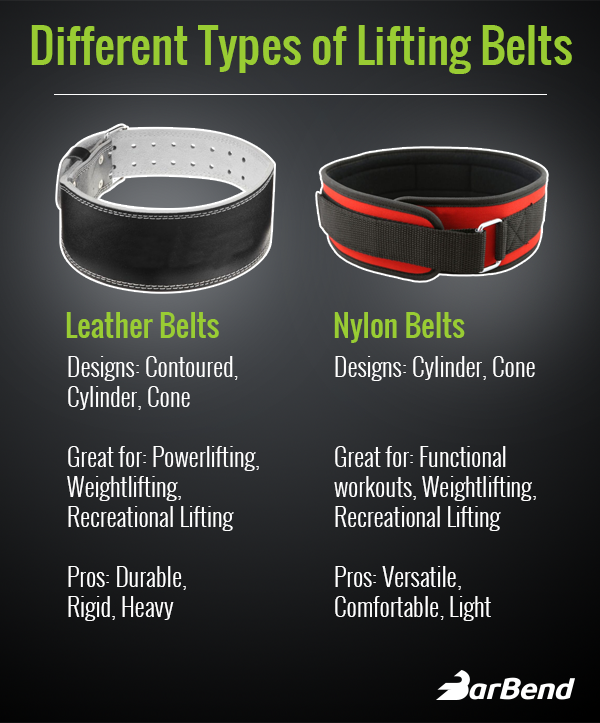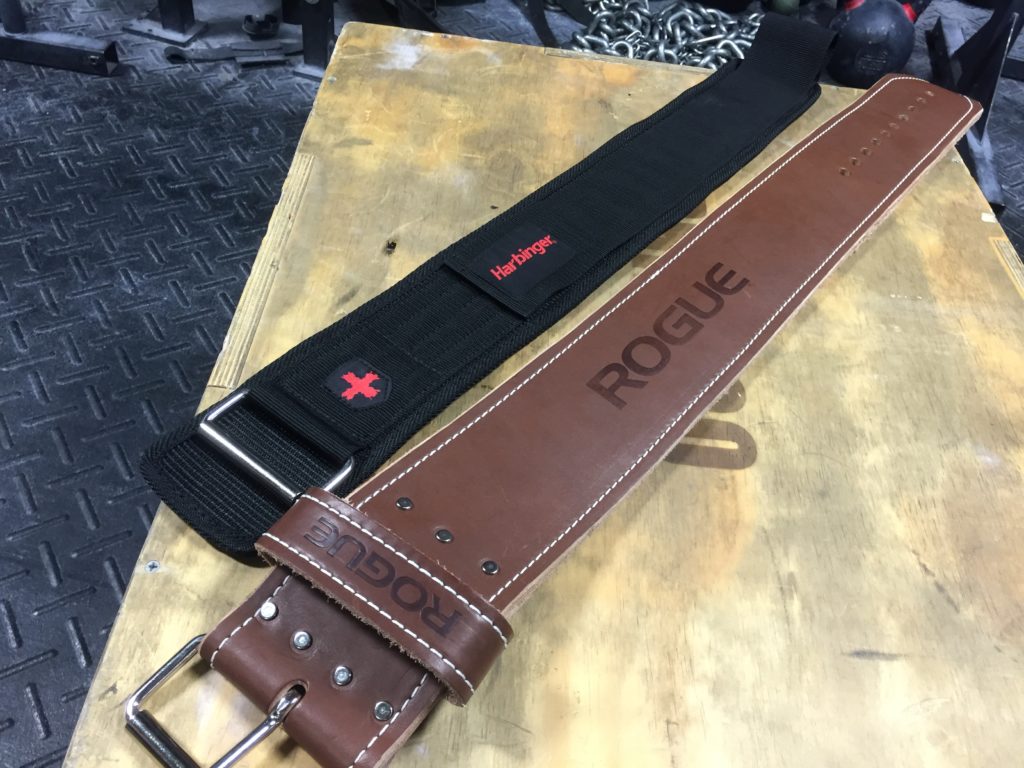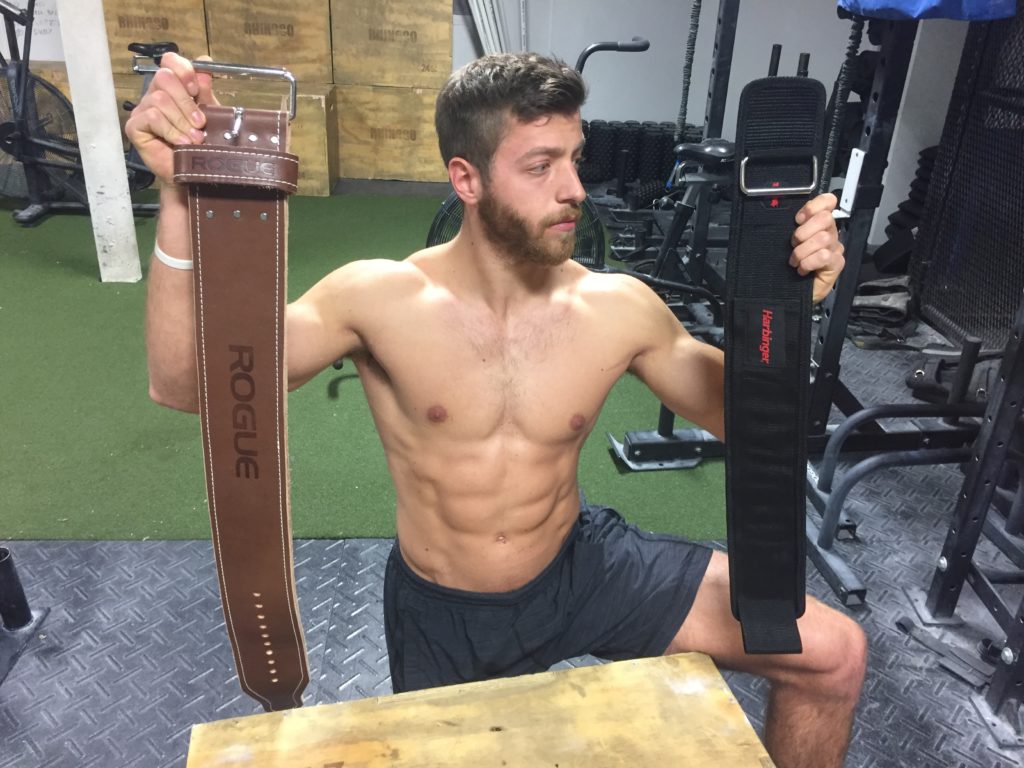Of all the lifting belts variations, there tends to be two different base materials that belts will made out of; these are leather and nylon. There are multiple material blends, foam inserts, and cloth variations in belts, but at the end of the day, the base always typically falls back to either leather or nylon.
This article will be a dissection into a few key differences between both styles of belt. For the weathered lifter, this information may seem like a no-brainer, but newer strength athletes may not fully understand what each type of belt has to offer.
[Looking for the right lifting belt for you? Check out our rundown of the best lifting belts on the market!]
In the video below, I pulled two standard belts we reviewed from each category. For leather, I pulled the Rogue Ohio Lifting Belt, and for nylon, the Harbinger 4″ Lifting Belt.
First Difference: Buckling Systems
Leather Belts: This style belt will utilize three different options, which include: single-prong, double-prong (there are a few triple-pronged belts), and levers. The belt’s end will have pre-made holes, similar to regular belts you wear on a daily basis. Buckles/prongs and levers are made out of metal, and are usually a stainless steel to ensure durability.
Single, double, triple, and lever buckles are all made to be strong and avoid any form of bending during maximal movements. Unlike prongs, lever buckles have a pre-fixed nature, so you’ll have to tailor the belt to your torso/needs to find the perfect fit.
Nylon Belts: These belts utilize stainless steel buckles as well, but only on the actual fastening section on the belt. The strap that tightens the belt will be made of pure nylon, or a cloth blend, and can be adjusted to fit the torso as tight as needed.
This style belt can often be pulled a little tighter, as it has more material to work with and no pre-made holes. Additionally, some nylon belts are made more rigid than others, so belt and strap width should be take into consideration.

Second Difference: Construction
Leather Belts: A leather belt will be thicker than a nylon belt, and will provide more rigidity for the torso. They’re usually constructed with multiple layers of finished leather, and enclosed with single or double stitching. Leather thickness and stitching can play a major role in a belt’s durability and stability.
Nylon Belts: Nylon belts are flexible and are noticeably thinner compared to leather belts. These belts will have varied stitching patterns, which are often dependent on the belt style.

Third Difference: Who Uses Them
Leather Belts: Often times, not always, powerlifters, weightlifters (tapered leather belts), and strongman competitors will reach for leather belts. These are the belts that provide the torso with the most stability, so lifters performing maximal lifts frequently will benefit best.
Another factor that goes into a lot of these athlete’s belt decisions is based on competition approved belts. Every powerlifting organization has their own set of approved equipment, but generally a competition belt can’t exceed a thickness of 13mm.
Nylon Belts: These are versatile belts that often benefit CrossFit, functional fitness athletes, and recreational lifter. They provide support, but also offer maneuverability through a variety of movements. This characteristic also makes these belts a little more ideal for beginners who may be new to using and bracing into a belt.

Leather and nylon belts both aim to provide the torso with additional stability. Your perfect belt should cater to your wants, needs, and strength sport.